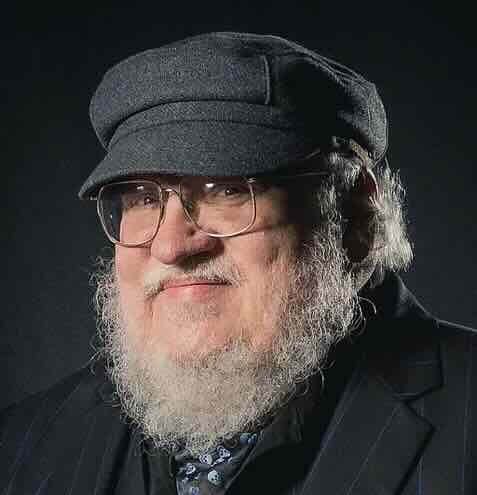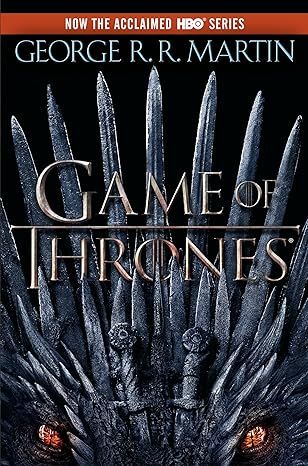
A Feast for Crows (A Song of Ice and Fire, Book 4)
4.5 out of 5
33,750 global ratings
It seems too good to be true. After centuries of bitter strife and fatal treachery, the seven powers dividing the land have decimated one another into an uneasy truce. Or so it appears. . . . With the death of the monstrous King Joffrey, Cersei is ruling as regent in King’s Landing. Robb Stark’s demise has broken the back of the Northern rebels, and his siblings are scattered throughout the kingdom like seeds on barren soil. Few legitimate claims to the once desperately sought Iron Throne still exist—or they are held in hands too weak or too distant to wield them effectively. The war, which raged out of control for so long, has burned itself out.
But as in the aftermath of any climactic struggle, it is not long before the survivors, outlaws, renegades, and carrion eaters start to gather, picking over the bones of the dead and fighting for the spoils of the soon-to-be dead. Now in the Seven Kingdoms, as the human crows assemble over a banquet of ashes, daring new plots and dangerous new alliances are formed, while surprising faces—some familiar, others only just appearing—are seen emerging from an ominous twilight of past struggles and chaos to take up the challenges ahead.
It is a time when the wise and the ambitious, the deceitful and the strong will acquire the skills, the power, and the magic to survive the stark and terrible times that lie before them. It is a time for nobles and commoners, soldiers and sorcerers, assassins and sages to come together and stake their fortunes . . . and their lives. For at a feast for crows, many are the guests—but only a few are the survivors.
Few books have captivated the imagination and won the devotion and praise of readers and critics everywhere as has George R. R. Martin’s monumental epic cycle of high fantasy that began with A Game of Thrones. Now, in A Feast for Crows, Martin delivers the long-awaited fourth book of his landmark series, as a kingdom torn asunder finds itself at last on the brink of peace . . . only to be launched on an even more terrifying course of destruction.
About the authors
George R. R. Martin
George R.R. Martin is the globally bestselling author of many fine novels, including A Game of Thrones, A Clash of Kings, A Storm of Swords, A Feast for Crows, and A Dance with Dragons, which together make up the series A Song of Ice and Fire, on which HBO based the world’s most-watched television series, Game of Thrones. Other works set in or about Westeros include The World of Ice and Fire, and A Knight of the Seven Kingdoms. His science fiction novella Nightflyers has also been adapted as a television series; and he is the creator of the shared-world Wild Cards universe, working with the finest writers in the genre. He lives in Santa Fe, New Mexico.
Read more
Reviews
Kyle N.
5
The most divisive book in the series is still a worthy part in it.
Reviewed in the United States on December 12, 2015
Verified Purchase
A Feast for Crows is likely the most divisive part of the ongoing A Song of Ice and Fire series of books. In developing the sequel to the widely loved A Storm of Swords, George R.R. Martin realized that he wouldn't be able to do the five-year time skip he originally envisioned because there was just too much plot in this deep series. However, because he wanted the fourth book to be shorter than A Storm of Swords (which was the longest book yet, an accomplishment of its own given the door-stopper length of these books), the fourth book in the series would need to be split into two more: A Feast for Crows and A Dance with Dragons. Each needed its own complete story, though, so George R.R. Martin decided to split the plot of the books on geographic location: A Feast for Crows would follow King's Landing and the Riverlands, while A Dance with Dragons would follow the North and across the sea in Essos. This meant that each book would have different point of view characters, and many of the fan favorites ended up in A Dance with Dragons, such as Tyrion, Danaerys, and Jon. However, although some of the fan favorite characters are missing, A Feast for Crows is still definitely an entry in this amazing series, and a worthy one at that.
A Feast for Crows follows directly from the end of A Storm of Swords and follows many point of view characters on the south end of Westeros as the War of the Five Kings winds down. Cersei and Jaime are dealing with the loss of their father and taking care of the kingdom, Brienne is sent through the Riverlands to search for Sansa Stark, the Iron Islands lose their king and must find a new one, and Prince Doran in Dorne is also dealing with the loss of his brother in the events of the prior book while other machinations are occurring under his nose. With the expansion to Dorne and more detail in the Iron Islands, a large amount of new point of view characters are brought into play in those areas, though most take up only one or two chapters. Other recurring characters like Cersei and Brienne are now given their own chapters as well, further developing their characters. The plot moves forward in its own way, though it is apparent that this is a middle book. There are no big twists like previous books (the big death of the first book or the Red Wedding of the third), and the plot does often feel like build-up. However, those who enjoy the characters of the series will still enjoy their arcs over the course of the book, while the latter act of the book does build up to some thrilling final chapters that set up the forward progression of the series nicely.
Where A Feast for Crow proves that it is still a worthy member of the series, even if not the best, is its characters: they are still deep and wonderfully written. A vast amount of characters exist in this book, but all of them are rich and believable, from point of view characters to side characters like Robert Arryn, Genna Lannister, or Septon Meribald. The point of view characters are well-developed, often in ways that give us new insight into their characters. For example, we get a better idea of Brienne's upbringing and life back home, and we finally learn what goes on in Cersei's head as she rules the kingdom. Cersei is a highlight of the book, not just because she has the most chapters, but because we learn a new perspective on her and learn why she is the way she is, but in a way that still takes care to keep her as unlikable as ever, if not more so. Character interactions and relationships are also still strong, especially the growth of Jaime and the way his relationship with Cersei develops, or breaks, over the course of the book. The deep characters are one of the series' greatest strengths, and that doesn't change here.
Another of the series' strengths is strong writing and excellent world building, and both are here. A Feast for Crows continues to have well-written dialogue. Martin is a master at crafting wonderful monologues that hit hard and scenes that close out a chapter leaving us wanting more (only to have to wait until the next chapter from that character). The prose is great as well, whether it is describing drool-inducing meals, gorgeous fashion, or imaginative locations. The world of A Song of Ice and Fire is rich in a way that takes the best cues from Tolkien, but understands what it was that made Middle-earth such a beautiful setting without just cloning Middle-earth. We get new developments about Westerosi culture, from Dorne to the Iron Islands, and even a little bit across the Narrow Sea. This cultural development also continues the intelligent themes and motifs of the series while focusing on some new ones. A Feast for Crows delves into how a medieval society treats women and the roles it puts them, religion, the mystery of magic, and the ever-present politics in ruling a kingdom ("the game of thrones").
This is a hard book to rate and review, because many may still have different feelings. Mechanically, the pieces are still there, the characters and the world are still well developed in a truly Martin way. However, the absence of characters like Tyrion, Jon, and Danaerys and lack of or minimal progression on some of the overarching story lines of the series (such as the Wall or Danaerys' journey back to Westeros) may leave this book as "that one you have to get through" for some readers. However, those willing to wait for those characters, and take in this book as it is, will still find a book that is definitely a part of the series and well worth a read.
Read more
2 people found this helpful
Dan Berger
5
Too long by half but still draws you in
Reviewed in the United States on October 9, 2018
Verified Purchase
I was pleasantly surprised by this fourth installment of the “Game of Thrones” series. It picks up the pace after previous installments dragged with various characters’ endless wanderings.
The story line deviates from that of the TV series enough to make it fresh even if you watch the latter. I spent time checking maps and websites to firm up my understanding of what went by in a blur on TV.
This series is too long by half. Martin unnecessarily draws out scenes involving minor characters, and constantly introduces avoidable new ones. The cast of characters is so long it occupies nearly 10 percent of this volume. Martin has managed, though, to create a whole world, one even wider and more developed than Tolkien’s Middle Earth, and in its many shades of gray more realistic and adult than the latter. I must credit him.
I found, say, a chapter on Arya’s wandering through Braavos, selling shellfish to many as she gathers information, to be quite evocative and beautiful. Martin could have covered this episode in her saga in a few paragraphs, but instead took a longer and more artistic option, and the result is quite lovely.
This story begins after Tyrion Lannister murders his father Tywin and flees. His sister Cersei Lannister, still Regent but now in charge with her powerful father gone, needs a new Hand to replace him. Her brother Jaime won’t take it, earning her resentment, and catalyzing a growing rift between the two.
For Jaime’s own part he’s jealous over the infidelities of his twin, whom he incestuously loves. Others turn her down too. Cersei is fun to read, but truly an evil queen. We don’t dismiss her, though, because the theme of this vicious game is what it takes to seize power and hold it, and what happens to those who lose. Our world isn’t that different, and we have to ask ourselves, if we were in Cersei’s place, might we make the same choices?
Not wanting Jaime around, Cersei sends him north to secure the huge, strategic Harrenhal castle and to take Riverrun, where the last Tully brother holds out. The TV series didn’t develop the siblings’ growing alienation as much, or Jaime’s realization of the monster his sister is becoming.
Sansa and Littlefinger hole up at the Eyrie. Sansa must keep a secret - that Littlefinger murdered his bride Lisa Arryn - and deceive Arryn bannermen, suspicious of this newly arrived usurper. Sansa sees the depth of Littlefinger’s corruption: he murdered Lisa to protect Sansa, but had planned to all along to seize power over the fief.
Arya arrives in Braavos, finds the House of Black and White, and finally wins their trust enough to begin training as an assassin. She is ordered to eradicate every trace of her former self, but nurtures deep down her secret dream of revenge.
Sam endures a harrowing voyage south to shelter Gilly and her baby with Sam’s family. They lay over in Braavos, where Sam encounters Arya without either realizing their connection through Jon Snow. They are stranded when the Night Watch’s aged maester they accompany - one of the last of the royal Targaryens - is too sick to go on. Sam gloms to Gilly’s tragic secret as he searches desperately to get to Oldtown and the Citadel.
In the Iron Islands, with Balon Greyjoy dead, a new king must be chosen by the people. Balon’s niece Asha throws her hat in, but too few ironborn will accept a woman leader. Another of Balon’s brothers, now high priest, desperately tries to stop another brother, the wicked Euron - whom readers know murdered Balon - from becoming king. A third brother contends but doesn’t have Euron’s ability to sway a crowd. The TV show had Asha’s brother Theon involved here, but in the book he’s been MIA for a couple of volumes.
Brienne roams the riverlands searching for Sansa, trying not to name and thus endanger her. Brienne must endure men resentful of a woman knight, including Sam’s nasty father Randyll Tarly, who’s scouring outlaws from the war-ravaged land. It’s a lot easier when it comes to blows, since the towering Brienne can vanquish almost any man she fights.
The book develops, much further than the TV show, the Sand Snakes plotting in Dorne against their crippled and cautious uncle. They want revenge against the Lannisters for their father’s death. Cersei’s daughter Myrcella is a Martell hostage and a pawn in the game. The focus on TV is the prince’s colorfully violent bastard nieces, but here it’s on his more conventional daughter Arienne, who plays a high-stakes game using her feminine wiles on Myrcella’s bodyguard, Arys Oakheart of Jaime’s officially celibate King’s Guard.
Back in King’s Landing, Cersei surrounds herself with mediocrities after alienating those few good people who might have helped her. She wants to eliminate her young son’s bride, Margaery Tyrell, as a rival. She fears the latter aims to depose Cersei through the boy king she increasingly influences.
We don’t see Tyrion, Daenarys, Jon, Stannis, the Onion Lord, or Bran (I don’t miss him, he bores me, along with his frog-gigging companions), but the story still drew me in.
Westeros is a chaotic mess after years of civil war. Much of it, particularly the central Riverlands, is a smoking, corpse-choked ruin, full of orphans, broken people and bandits. There are rumors of dragons across the sea.
Read more
37 people found this helpful

drefractor
5
This continues to be like no other series...
Reviewed in the United States on December 12, 2005
Verified Purchase
Wow, after reading some of the negative reviews of this book (let's call it book number 4A), I was a bit worried. But a needless worry, there is little discernable lettup of quality in this book from the first 3. To be sure, there are not quite the number of seismic events within the timeframe (I'm guessing about 8 months) written about in "A Feast for Crows", but rest assured, there are NOT very many new characters introduced (other than the obligitory references to scores of relationships and relatives!); and the plot is not meandering at all. A Feast for Crows largely tells tales of minor skirmishes and political intrigue that follow the extensive wars that comprised the second and third books. Perhaps the nay-sayers simply are not impressed when there isn't a steady diet of death and destruction or nonstop action?
Martin keeps the focus over the story's timeframe to 6 major characters: Brienne, Jaime, Cersie, Sansa, Arya and Samwell; introduces a few characters to flesh out the political climate of the southern land of Dorne (curious about the Red Viper's home?) and describes the ongoing saga of the Ironborn as they seek to infiltrate their way into the mainland.
It seems to me that this is a plenty big, but scarcely new, canvas of storylines to keep track of. I appreciated the limited scope of the book to these storylines; many times as I read the first three books, I would skip several story lines to follow the evolution of one or two of the characters before going back again. This is a perfectly logical approach to the story telling as there is very little physical interaction between the characters in this book versus those to come in the next. Martin's choice to segregate the 4th book into books 4A and 4B isn't the least bit distracting if you can put the other characters on hold in your mind (which you have to do in any book, just for not quite as long a period of time).
Within the six major characters storylines, we get (amoungst other things):
- An update on the doings of the Westro's most clever (and extremely honorable, in his own way) player, Littlefinger as Sansa's "father". As with most of Martin's characters, Petyr Baelish comes in various shades of grey; readers are afforded a chance to draw their own conclusions as to just how grey...
- A momentary look at Catelyn revived (for better or worse!) in Brienne's story
- A momentary look at Jon who sends Sam and Maester Aemon on a mission
- The releationship of Cersei's son and daughter-in-law; and the administration for the Iron Throne done Cersei's way
Several storylines are making a direct beeline for Dany, and it's too early to tell where Brienne will end, so I think it pre-mature to criticize the editing until more has played out. Thus far, I haven't seen any storyline drift into irrelevance so I have no reason to not be optimistic...
As for those who liken this release to the crumbled messes that became Jordan's WOT (somewhat revived in KoD), or to a lesser degree Goodkind's SOT, give it a rest! Complain all you want about the lack of action, but the details and pace (reasonably fast for my tastes) of the story are well justified for those readers who are curious about characters and cultures of all of the major kingdoms and how they are reacting to the events of their time. There are no endless fussings over fashions, no endless repetitions of mannerisms, no 200 pages to cover the day in the life of one character (apparently there are those who actually like such ramblings in the WOT world?), no endlessly immature characterizations, no repetative philisophical oratories; the focus remains mainly on the fully adult characters or the evolution of the younger characters that we already know and how they are coping with the aftermath of the preceding books. The few new characters introduced by Martin are reasonably described according to the depth of their impact on the story.
My only minor quibble with the book is that for the first time we end with a couple of cliffhangers of an immediate kind; prior to this book, Martin did a pretty good job of leaving off at places that were intriguing, but not in the middle of a life and death situation. Hopefully, these will be resolved as part of Book 4B -- I think it's a bit unreasonable to have to wait for more than a year to see whether or not a couple of the specific main characters live or die.
In summary, if you enjoy the way Martin has richly developed his characters and story, and don't mind the reality that most people DON'T change that much (except, of course, for the younger characters who are evolving in ways that might surprise), and don't mind that you'll have to wait until next year to read about Danys, Jon, Tyrion and Stannis, amoungst others, you'll find much to deeply appreciate in this effort.
Read more
12 people found this helpful
Todd O'Rourke
5
Compelling Political Intrigue
Reviewed in the United States on July 30, 2013
Verified Purchase
Expectations were without a doubt going to be high coming off of what many people (including myself) considered to be the best novel in the series: A Storm of Swords. Perhaps the expectations were impossibly high. Too high for any author to meet, including George Martin. With some of the decisions that Martin had to make for this book to come out at all, there was likely to be some vocal backlash from certain fans. (In an attempt to not regurgitate a summary of A Feast for Crows, which many of people have already done. I will focus on how the novel compares to previous books, and try and quell reader's fears.)
The problem proved to be what most people predicted at the end of A Storm of Swords: the series got too damn big. Although there are many fantasy series out there with more books in them. I mean look at Robert Jordan, his novels have managed to span fourteen volumes, not including the prequel novel, and a companion book. I'm pretty certain that he is in large part the reason for deforestation. Not to mention the likes of Piers Anthony (whom I am very fond of) and select other authors who don't seem to understand the word "ending". However, unlike many other fantasy authors that seem to fill half of the novels with mere bloating tactics, while their ongoing plot arches are paper-thin and miles wide. Martin develops A Song of Ice and Fire, with a scope that is unmatched by any author. If you want depth, you're looking at the Mariana trench of fantasy sagas. It is safe to say that A Song of Ice and Fire didn't just raise fantasy's literary bar, it became the standard for which everyone else must try and match.
With A Feast for Crows, Martin found himself faced with the insurmountable odds of tying in characters and story lines, which after half a decade of buildup, ended up with him cutting it in half. The unfinished storylines and their characters were simply held off until the next book in the series, A Dance with Dragons. Feast's length is closer to that of A Game of Thrones than Storm, which might make some people disappointed after such a long wait. But I think it was a better choice for the story - or to put it more aptly, this installment of the story. Considering that Feast was originally supposed to be two times longer, its most impressive quality is that it flows so smoothly together, and how concise the narrative remains.
As the story opens, the reader is introduced with a flurry of new characters (a necessary device, considering that most of the characters from the first three novels are now dead), some minor characters are now prominent figures, and several chapters that detail the relative calm across the land following the calamity of war. The best part, for me anyways, is that some of the new point of view characters recap key plots that may have slipped many readers' minds over the series.
Some readers might be disappointed that we don't see much of the bloody and violent action of previous volumes in Feast. There is a lot of exposition, as Martin has to bring us up speed on not only characters we remember, but also on the new ones he's introducing. Martin obviously has a skill for worldcraft with compelling storytelling that remains virtually unchallenged in fantasy, but it also comes with, what many consider a down side. Many of the characters have lengthy discussions of politics, both present and historical. Like I said, many people believe this to be the worst part of the book. However, I felt that it was the most interesting. There is something to be said for the level of painstaking detail of history that Martin placed into his novel.
If A Feast for Crows is only a transitional volume in this gigantic saga, it is still a story told with as much passion and humanity as Martin has brought to any previous volume. And it adds much detail and texture to an already rich and layered world. The choices of what to cut and what to hold back obviously were not easy ones, considering the book's long and frustrating gestation. But readers who have managed to avoid building up unrealistic expectations will find that Martin has brought his story to a necessary, believable, and appropriate pass. In the aftermath of catastrophic war, in the endless, vain and violent quest for power and more power, no matter whose banners are flying at the end of the day, there are no real winners. Except the crows.
Five Stars
P.S. I know that many people have written about how you could skip the Cersei chapters. DO NOT DO SO!!! You would be doing yourself a great disservice. She is without a doubt the most interesting character in this particular novel.
Read more
2 people found this helpful
J
4
A treat for fans of Westeros
Reviewed in the United States on July 6, 2011
Verified Purchase
I recently completed a re-read of this book and came away with such a hugely differing opinion from my first time through that I thought it important to encapsulate my thoughts here before they fade away with time.
Upon my first read I was struck with a similar feeling to those critical of the book; namely that I didn't care about these new (or previously secondary) characters, and that the plot moved too slowly and "nothing happens". Clearly, my expectations coming into the book during both of my reads served to enhance my reaction. The first time through I had just finished A Storm Of Swords, in which nearly 1,300 pages flash by in an instant thanks to the plot moving at the speed of light. So much happens in that book. And AFFC is its polar opposite in terms of pacing and what it's focused on. ASOS is hurtling you through the climax of the War of the Five Kings, the instability of the Night's Watch and the Battle at the Wall, and Daenerys's aggressive escapades in the East. Even the more slowly paced chapters, such as the Arya chapters, are highlighted with some great, pulse-pounding moments, such as Sandor Clegane's trial in Hollow Hill. The book is full of climactic moments; I almost consider it to be the conclusion of A Song Of Ice And Fire's first arc. It's fantastic.
A Feast For Crows, then, is not so much Martin beginning to pick up the pieces the first three novels have tossed around and establishing the beginning of the plot arcs for coming books (though he is certainly doing that), but Martin giving us a middle chapter in which we take a breath, look around, and survey all the chaos that has been wrought by the characters we've been following up until this point. Up until now, the focus has remained very deep and detailed; we're watching these characters' actions from the inside of their heads, primarily concerned with how they're going to attempt to accomplish their goals. AFFC sharply changes that.
More than half of this book takes place in the eyes of Brienne (8/46 chapters), Cersei (10/46 chapters), and Jaime (7/46 chapters). Instead of each chapter taking place with characters across the globe from one another, we're now centered in Westeros' very core, with Cersei ruling King's Landing, Jaime spending time in King's Landing and the neighboring Riverlands, and Brienne wandering the Crownlands and the Riverlands. These areas have been hard hit by the war. The common people of the Westerlands, the Riverlands, and the Crownlands bore the brunt of the war, as you might expect. Entire villages are gone, burned lumps of ash sacked and looted, their people executed and raped for no real reason other than a Lannister, Stark, Frey, or whomever patrol had come through. But it's been bad for the "haves" of this society as well. Landed knights, minor lords, and even some great and storied Westerosi noble houses have had their holdings burned around them and their granaries cleaned out by passing armies leaving them to starve in the coming winter. Entire great houses that have been around for thousands of years are extinguished. One of the major points of this novel is that things are bad amongst everyone in Westeros, even the victors. Well, except maybe the crows. Hence the title.
The plot does progress, albeit far more slowly than in any of the previous novels. The war is winding down, the climactic moments have occurred, and the victors are cleaning up what little resistance remains. So why did I enjoy this book so much? What fills the hole that all of these awesome, climactic moments have left?
A Feast For Crows is the most atmospheric of all the novels in the series up to this point. Martin's writing has clearly improved from the initial novel in the series, and he lets it shine here. This series features some of best character and dialogue writing in all genre fiction, and it's on full display in this book. There are several instances in this book in which the dialogue was so excellent, I had to set it down and remark aloud:
- Aemon Targaryen, 102-years old and dying, waking from a fitful sleep to address his long-dead brother; "Egg? I dreamed I was old."
- Septon Meribald's "broken man" speech putting into perspective how hellish the prospect of war actually is for Westeros' serf class.
- Thoros of Myr lamenting upon what war has done to the brotherhood; "We were king’s men, knights, and heroes... but some knights are dark and full of terror, my lady. War makes monsters of us all."
- Mya Stone describing her memories of Robert Baratheon's love for her prior to his abandonment, and how she was raised by the mountains of the Eyrie after he left.
This book is Martin's rumination upon why war is so terrible, why it's a net-negative for all of those involved. Nobody has come out of the War of the Five Kings in a better place than when they've started. The losers, obviously not. But even the victors. Their granaries are empty. Family members have died in the war or are marrying people they hate to bury the hatchet with previously rival houses. Vast swaths of lands and holdings have been destroyed. And while all of this death and destruction could have made a book like this a bleak slog of a read, Martin's consistently excellent mise en scène alleviates that problem, as does his inclusion of many minor characters who serve to heighten the story past what it could have been. The moments of beauty and hopefulness present in this novel contrast more sharply given their context.
I understand that Martin's decision to split the narrative between this and A Dance With Dragons was a difficult one, but I really enjoy that A Feast For Crows stands on its own as his treatise on why war is such a terrible thing. It's a well-written, atmospheric treat for anyone who's a fan of this world, and coming into this novel a second time while knowing what to expect allowed me to enjoy it far more than I did the first time. The more I read, the more I found myself melting into its world, passively experiencing its characters and its setting, and becoming wholly immersed in what Martin has created. I didn't need the bombastic foolishness of the HBO series, or the climactic battles of the previous novel, or pulse-quickening episodes of single combat. I was too busy being enveloped in the pine trees gently rustling in the wind as Brienne, Pod, and Dick Crabb slowly meandered their way through the woods of Crackclaw Point. I was skipping alongside Arya as she explored the quiet canals of Braavos at night under a full moon. Or with Jaime and his pensiveness in Castle Darry as a fire crackles in the corner and the Autumn wind howls against the shutters. Reading A Feast For Crows is like watching one of those 10-hour long YouTube ambiance videos and sipping on hot wine while thinking about something as profound and serious as what total war says about humanity as a whole and does to humans as individuals, and I love that about it. What it lacks in explosiveness, it makes up for in subtlety and its impeccable craft. If that sounds boring to you, then you probably won't like this. But if you love Westeros as much as I do, you'll probably enjoy this book for what it is.
TL;DR -- 4 stars for ASOIAF fans like myself who enjoy just "being" in this world, 3 stars for others who aren't as infatuated with Martin's world due to the slower plotting.
Read more
5 people found this helpful
Top George R. R. Martin titles
Best Sellers
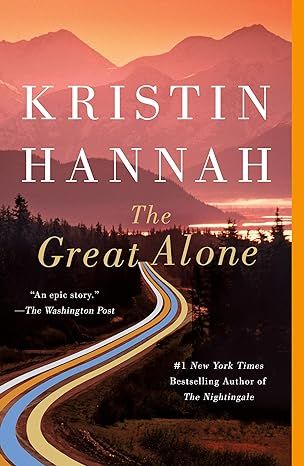
The Great Alone: A Novel
4.6
-
152,447
$5.49

The Four Winds
4.6
-
156,242
$9.99

Winter Garden
4.6
-
72,838
$7.37

The Nightingale: A Novel
4.7
-
309,637
$8.61

Steve Jobs
4.7
-
24,596
$1.78

Iron Flame (The Empyrean, 2)
4.6
-
164,732
$14.99
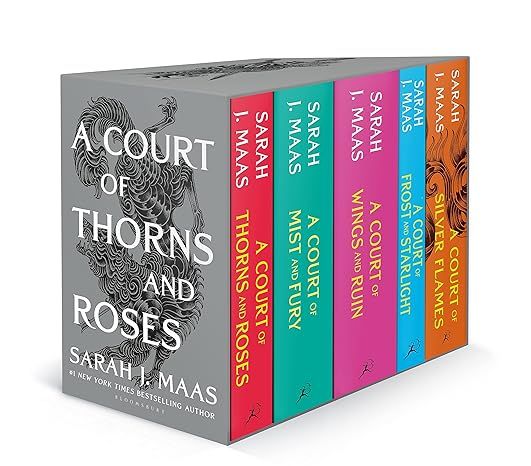
A Court of Thorns and Roses Paperback Box Set (5 books) (A Court of Thorns and Roses, 9)
4.8
-
26,559
$37.99

Pretty Girls: A Novel
4.3
-
88,539
$3.67
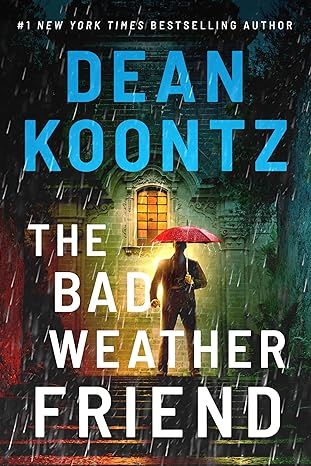
The Bad Weather Friend
4.1
-
34,750
$12.78

Pucking Around: A Why Choose Hockey Romance (Jacksonville Rays Hockey)
4.3
-
41,599
$14.84
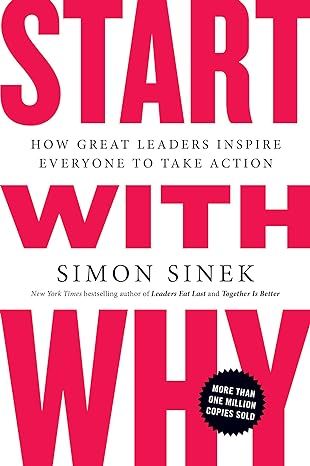
Start with Why: How Great Leaders Inspire Everyone to Take Action
4.6
-
37,152
$9.99
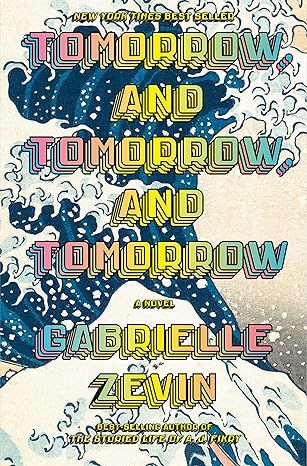
Tomorrow, and Tomorrow, and Tomorrow: A novel
4.4
-
95,875
$13.99
